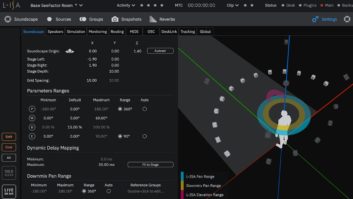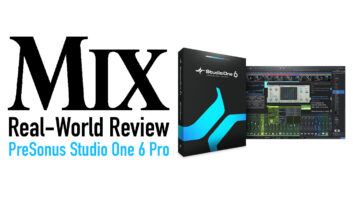By nature, “musicians” and “organization” do not go hand in hand. But once a musician branches out and becomes either a producer or studio owner, organization becomes necessary. I admit that as both a producer and studio owner, I would much rather spend my time in production than sitting in front of a computer typing in client addresses, labeling tapes, printing invoices and bar codes, or searching through a filing cabinet looking for track sheets. That’s why it helps to invest in a product such as AlterMedia’s Studio Suite-the all-in-one, organize-your-recording/mastering/project/video post-production studios-and-production companies-so-you-can-work software. Studio Suite’s 20 relational modules help organize, manage and simplify the complex environment of large or small facilities at a home studio price.
Studio Suite is a relatively easy-to-use production management system that operates through FileMaker Pro on a Mac or PC, allowing cross-platform networking. It allows the user to keep detailed records of such things as contacts, scheduling, media inventory, bar codes, sessions, equipment, recording budgets and various other data that would otherwise be recorded on Post-It notes and scattered about the studio until they got accidentally thrown away. Studio Suite removes the fear of organizing by neatly putting everything into one package.
Opening up to the Main Menu, I was greeted by a very friendly looking interface-a module-type menu with 20 buttons that, with a simple click, takes you wherever you need to go. Most sections of Studio Suite are interconnected, meaning they are related to and interact with each other. Information entered in one section allows you to gather and use that information in another section. For example, when you open up a client’s record you can see all previous invoices, all media, every song that was worked on, and even the rates charged each time. It makes it easy to keep close track of every aspect of every project. Plus, Studio Suite’s five levels of security access let you define passwords to determine who gets access to what information.
The Calendar function is also useful, especially when you have multiple engineers or producers whose sessions need to be managed. My studio has three engineers, so scheduling can become a bit of a headache. The Calendar page lets you keep detailed track of which room is booked when, and when your equipment, people and media are booked as well. Each detail of every session can be tracked, too, even whether the session is confirmed or tentative. And the elaborate networking allows each room of a multiroom facility to be connected to the others. For example, if a booking is changed in the office, the engineer can see it in the control room. Or if the engineer logs an equipment problem, it will show up in the maintenance room. All of our engineers have access to the program and can use the data interactively.
Delving further, I realized that Studio Suite was designed by someone who has spent a lot of time in the music business and had a lot to keep track of-everything is there, from recording budgets to equipment maintenance logs, each with various subheadings that allow you to track the minutiae of each category. For example, under the Recording Budgets menu, there are sub-menus such as Pre-Production, which compares budget costs to actual costs. The next sub-menu, Recording, allows you to break down the number of days of tracking required, cost per day, media costs, rentals, total cost, etc. Then there is a sub-menu for keeping track of hired talent costs, travel expenses, living expenses, producer fees (my favorite page), mastering costs, etc. Studio Suite keeps running totals, calculates and prints Summary reports and even configures taxes where applicable. Each page in Studio Suite has a simple Main Menu button that returns you to where you started, as well as a Print button that captures and prints the current page.
Something I found very useful was the Sample Management page. I do a lot of sampling and rely on my very unreliable memory to find and use my samples. The sample manager lets you keep track of all your samples: what type of samples they are; where they were taken from; where they are stored; plus contact information for the original artist, publishing companies, record label, etc. Another very cool feature throughout Studio Suite is that when you have to select media types (DVD, Zip, CD-ROM, etc.) and even brand data (Roland, Akai), most choices are offered via pop-up menus, which often means you don’t have to highlight the dialog box and type in the data. When you’re entering a lot of data, this feature really saves a lot of time and helps prevent unnecessary repeat typing or entering data into the wrong box type. These are minor features, but in my opinion, it’s the little things that separate good computer programs from great ones, and can prevent people like me from grabbing my monitor and throwing a 30-yard spiral through the window and onto the concrete outside.
Studio Suite has many more functions than those I’ve listed here; these are simply the ones that I found an immediate need to use. There is a sophisticated invoicing system, stock and inventory trackers, and a recall module that has drawings of 130 of the most common pieces of outboard gear where settings can be documented on screen. There’s even an alarm feature that can be used to remind you of calendar events or notify you when your media stock gets below a certain level. And at a low price of $389 for a two-seat user license, this application proves to be not only an amazing value, but practically a necessity for any production facility.
AlterMedia, 6300 Powers Ferry Rd., Suite 600-200 Atlanta, GA 30339; 800/450-5740; fax 770/303-0967; www.studiosuite.com.







